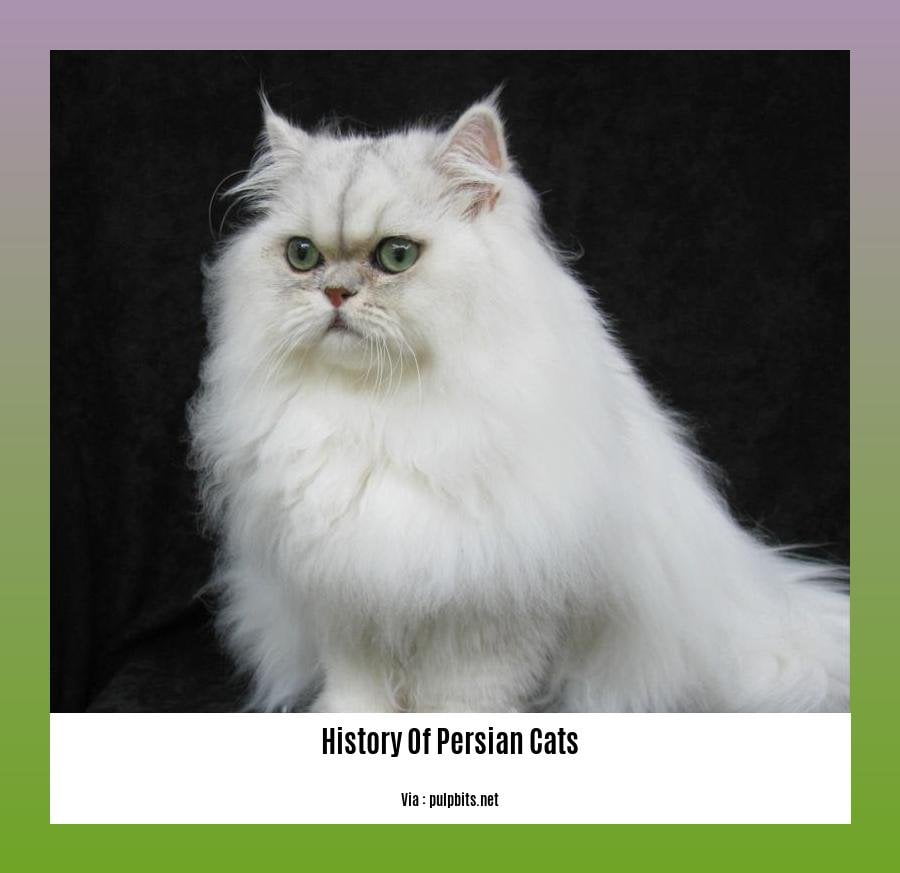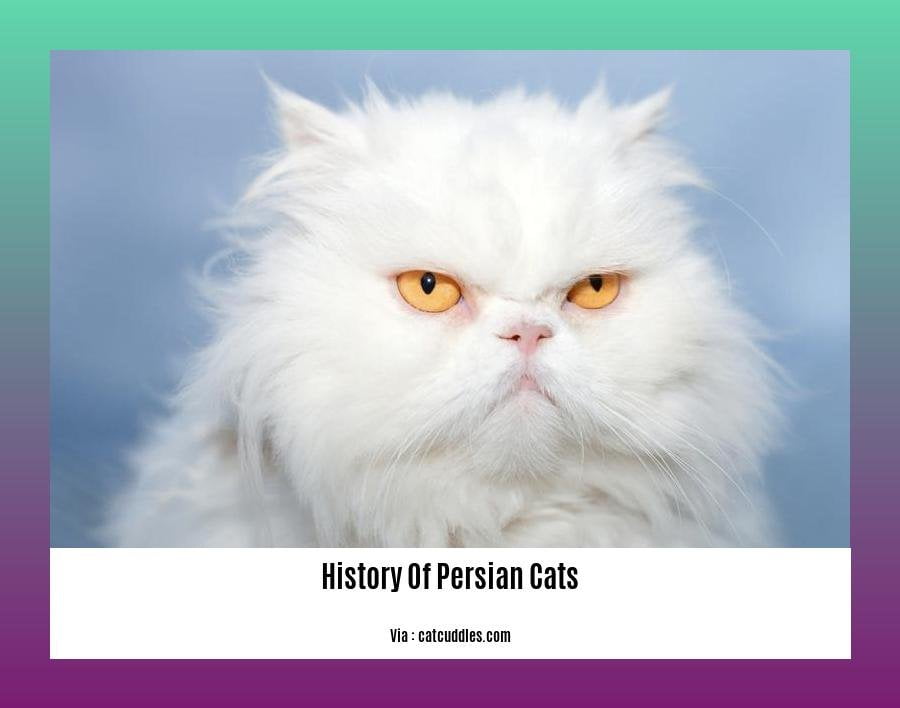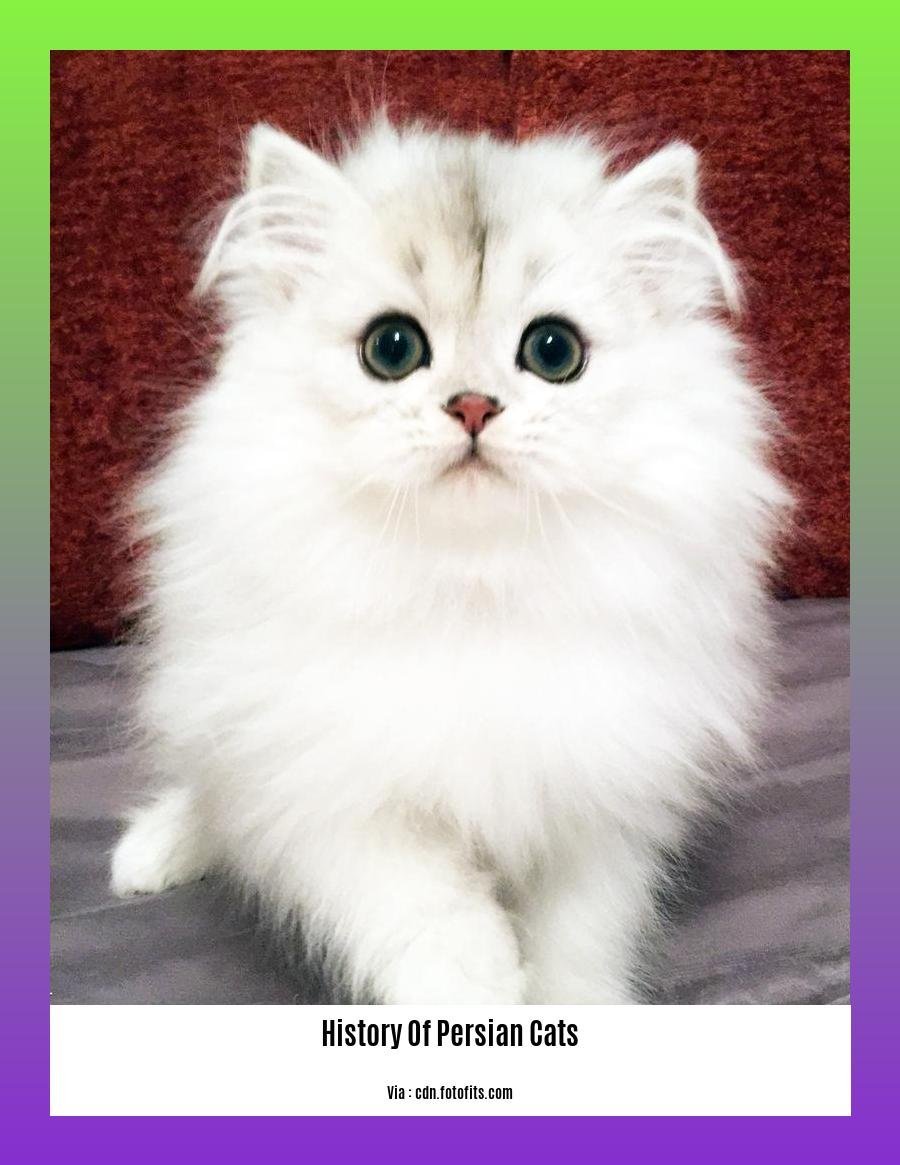Embark on a captivating journey through time as we delve into the rich history of Persian cats, a breed revered for its elegance, distinctive features, and enduring allure. From their ancient origins in the cradle of civilization to their rise to prominence among royalty and the elite, Persian cats have left an indelible mark on human history and feline culture. Join us as we uncover the secrets of this enigmatic breed, tracing their evolution, exploring cultural influences, and celebrating their enduring legacy. [A Journey Through Time: Unraveling the History of Persian Cats].
Key Takeaways:
The Persian cat has a long history, dating back to 1684 B.C., making it one of the oldest cat breeds.
Its origins are traced to Mesopotamia, a region now known as Iran, leading to the breed being named after the region it originated from.
Persian cats were introduced to Europe in the 1600s and formally showcased at the first organized cat show in 1871.
The popularity of Persian cats soared in Queen Victoria’s household, further solidifying their status as a beloved breed during that era.
History of Persian Cats

Let’s whisk you away on a historical journey, unraveling the captivating story of Persian cats – a breed that has graced our world for over 3,000 years.
Originating in the ancient lands of Mesopotamia (present-day Iran), these regal felines, named after the region of Persia, were already revered in 1684 BC. They were frequently depicted in intricate artworks, symbolizing grace, elegance, and divine power.
In the 1600s, Persian cats embarked on a journey to Europe, capturing the hearts of aristocrats and royals alike. Their luxurious coats and gentle demeanor made them a favorite in the courts of France, England, and Russia.
Queen Victoria was particularly smitten with these enchanting creatures, and her patronage played a pivotal role in popularizing the breed. During the first organized cat show in 1871, Persian cats stole the spotlight, captivating the world with their mesmerizing beauty and charm.
Since then, Persian cats have remained a beloved companion and a symbol of luxury and refinement. They continue to captivate us with their gentle nature, stunning appearance, and enduring legacy.
Curious about the unique history of the Portuguese Water Dog? Dive into the fascinating journey of this breed from its origins as a working dog in Portugal to its rise as a beloved companion. history of portuguese water dog
History Of Persian Cats Wikipedia

Unveiling the enigmatic past of the Persian cat, a journey through history reveals fascinating tales of feline elegance and human fascination.
The Ancient Lineage
The Persian cat, a regal breed with a storied past, can trace its lineage back to ancient lands steeped in mystery and opulence. Historians believe that the ancestors of these magnificent felines originated in the region of Persia, now known as Iran, where they were revered as symbols of wealth and royalty.
Persia’s Precious Treasure
In the royal courts of ancient Persia, the Persian cat was a cherished companion, pampered and adored for its distinctive beauty and gentle temperament. These elegant creatures were often adorned with intricate jewelry and lavish garments, reflecting their status as symbols of affluence and power.
European Encounter
During the 16th century, European explorers, captivated by the exotic allure of the Persian cat, brought these felines back to their homelands, introducing them to a wider audience.
A Star is Born
In the Victorian era, the Persian cat ascended to unprecedented heights of popularity, becoming a beloved companion in the homes of the British elite. Queen Victoria herself was a devoted admirer of these regal felines, further solidifying their status as symbols of refinement and luxury.
Modern-Day Legacy
Today, the Persian cat continues to captivate hearts worldwide, remaining one of the most popular and recognizable breeds. These gentle giants, with their luxurious coats and captivating eyes, have left an enduring mark on the world of feline history.
Key Takeaways:
- Persian cats trace their origins to ancient Persia, symbolizing wealth and royalty.
- European explorers introduced the breed to Europe in the 16th century.
- Queen Victoria’s patronage in the Victorian era elevated their popularity.
- The Persian cat remains a beloved companion, renowned for its beauty and elegance.
Sources:
FAQ
Q1: When did the Persian cat breed originate?
A1: The Persian cat breed has a rich history dating back to 1684 BC, originating in Mesopotamia, the region known as modern-day Iran.
Q2: How did the Persian cat arrive in Europe?
A2: The Persian cat was introduced to Europe in the 17th century, likely through trade routes between Persia and Italy.
Q3: What significant event marked the rise in popularity of Persian cats?
A3: Queen Victoria’s fondness for Persian cats played a crucial role in their popularization. Her patronage of the breed during the Victorian era brought them into the spotlight and made them a favorite among cat enthusiasts.
Q4: What distinct physical characteristics define the Persian cat?
A4: The Persian cat is renowned for its long, thick, and flowing coat, which gives it a majestic appearance. Additionally, the breed is characterized by its round face, short muzzle, and large expressive eyes.
Q5: What concerns have been raised regarding the breeding of Persian cats?
A5: There are ethical concerns surrounding the breeding of Persian cats for certain extreme physical characteristics, such as brachycephaly, which can lead to health issues and potential welfare concerns for the cats.
- Crypto Quotes’ Red Flags: Avoid Costly Mistakes - June 30, 2025
- Unlock Inspirational Crypto Quotes: Future Predictions - June 30, 2025
- Famous Bitcoin Quotes: A Deep Dive into Crypto’s History - June 30, 2025
















